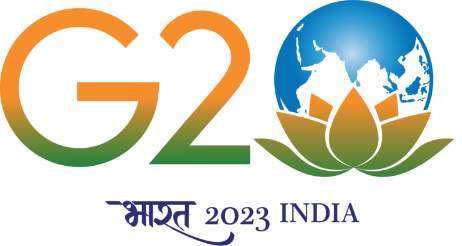Roles of Honourable Governor in Sixth Schedule Areas
Sixth Schedule Areas in Assam
There are three autonomous councils in the state of Assam established under the Sixth Schedule of The Constitution of India, which are as following:
Bodoland Territorial Council (BTC)
The Bodoland Territorial Council (BTC) is an autonomous council for the Bodoland Territorial Region established under 6th Schedule of The Constitution of India.
The BTC has 40 elected members and an additional six members that are nominated by the Governor of Assam. The area under the BTC jurisdiction is officially called the Bodoland Territorial Region (BTR).
The Bodoland Territorial Council Assembly is headed by a Speaker and the executive committee is chaired by a Chief Executive Member.
The BTC consists of four districts — Kokrajhar, Baksa, Udalguri and Chirang comprising various protected tribal belts and blocks in Assam.
Bodoland Territorial Region
Organizational Structure of Legislature and Executive of BTC
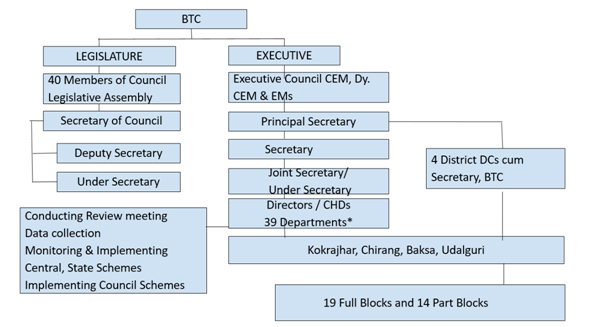
Names of all the Legislative Members along with their constituency names
| No. | Constituency | Name |
|---|---|---|
| 01. | 1 No. Parbatjhara (ST) | Moon Moon Brahma |
| 02. | 2 No. Guma (Open) | Rahindra Brahma |
| 03. | 3 No. Srirampur (Non ST) | Sajal Kumar Singha |
| 04. | 4 No. Jamduar (ST) | Reo Reoa Narjihary |
| 05. | 5 No. Soraibil (ST) | Mritunjay Narzary |
| 06. | 6 No. Kachugaon (ST) | Ukil Mushahary |
| 07. | 7 No. Fakiragram (NonST) | Arup Kumar Dey |
| 08. | 8 No. Dotma (ST) | Prakash Basumatary |
| 09. | 9 No. Banargaon (ST) | Rajib Brahma |
| 10. | 10 No. Debargaon (ST) | Hagrama Mohilary |
| 11. | 11 No. Baokhungri(ST) | Dhaneswar Goyary |
| 12. | 12 No. Salakati (ST) | Derhasat Basumatary |
| 13. | 13 No. Chirang (ST) | Saikhong Basumatary |
| 14. | 14 No. Chirang Duar (ST) | Ranjit Basumatary |
| 15. | 15 No. Kajalgaon (ST) | Paniram Brahma |
| 16. | 16 No. Nichima (ST) | James Basumatary |
| 17. | 17 No. Subhaijhar (ST) | Prabat Basumatary |
| 18. | 18 No. Manas Serfang (ST) | Dhananjay Basumatary |
| 19. | 19 No. Thuribari (Open) | Abhiram Mahanayak |
| 20. | 20 No. Mathanguri (Open) | Gautam Das |
| 21. | 21 No. Salbari (ST) | Joy Muchahary |
| 22. | 22 No. Koklabari (ST) | Mantu Baro |
| 23. | 23 No. Dihira (Open) | Ghanshyam Das |
| 24. | 24 No. Mushalpur (ST) | Rakesh Brahma |
| 25. | 25 No. Baganpara (ST) | Kati Ram Baro |
| 26. | 26 No. Darangajuli(ST) | Bijit Gwra Narzary |
| 27. | 27 No. Nagraijuli (Non ST) | Dharma Narayan Das |
| 28. | 28 No. Goibari (ST) | Pramod Boro |
| 29. | 29 No. Suklai Serfang (ST) | Ranendra Narzary |
| 30. | 30 No. Goreswar (ST) | Pabitra Kr. Boro |
| 31. | 31 No. Khwirabari (ST) | Bhabendra Baro |
| 32. | 32 No. Bhergaon (ST) | Daobaisa Boro |
| 33. | 33 No. Nonwi Serfang (Non ST) | Sanjit Tanti |
| 34. | 34 No. Khaling Duar (ST) | Dilip Kumar Boro |
| 35. | 35 No. Mwdwibari (Open) | Diganta Baruah |
| 36. | 36 No. Harisinga (ST) | Sanjoy Swargiary |
| 37. | 37 No. Dhwnshri (ST) | Fresh Muchahari |
| 38. | 38 No. Bhairabkunda (ST) | Gobinda Ch. Basumatary |
| 39. | 39 No. Pasnoi Serfang (Non ST) | Dipak Maur |
| 40. | 40 No. Rowta (ST) | Dr. Nilut Swargiary |
List of Nominated Members
| No. | Name of Nominated Members |
|---|---|
| 1 | Arpana Medhi |
| 2 | Hemanta Kr. Rabha |
| 3 | Madhav Ch. Chetry |
| 4 | Pradip Kr. Bayan |
| 5 | Sampawati Deka |
| 6 | Wilson Hasda |
Executive Council Members
| No. | Name | Designation |
|---|---|---|
| 01. | Sri Pramod Boro | CEM |
| 02. | Sri Gobinda Ch. Basumatary | Dy. CEM |
| 03. | Sri Arup Kumar Dey | Executive Member |
| 04. | Sri Ukil Mushahary | Executive Member |
| 05. | Sri Reo Reoa Narjihary | Executive Member |
| 06. | Sri Ranjit Basumatary | Executive Member |
| 07. | Sri Dhananjoy Basumatary | Executive Member |
| 08. | Sri Gautam Das | Executive Member |
| 09. | Sri Ranendra Narzary | Executive Member |
| 10. | Sri Diganta Baruah | Executive Member |
| 11. | Sri Ghanshyam Das | Executive Member |
| 12. | Sri Rakesh Brahma | Executive Member |
| 13. | Dr. Nilut Swargiary | Executive Member |
| 14. | Sri Daobaisa Boro | Executive Member |
| 15. | Sri Dharma Narayan Das | Executive Member |
| 16. | Sri. Wilson Hasda | Executive Member |
| 17. | Sri Sanjit Tanti | Executive Member |
Officials BTC Secretariat
| Name | Designation |
|---|---|
| Shri Anurag Goel, IAS | Principal Secretary |
| Shri Naren Ch. Basumatary, ACS | Secretary |
| Shri Jatin Bora, ACS | Secretary |
| Shri Dithakananda Hazarika, ACS | Secretary |
| Shri Amar Jyoti Barman, ACS | Secretary |
| Smt. Pami Brahma, ACS | Joint Secretary |
| Shri Wilburn Daimary, ACS | Joint Secretary |
| Shri Bhaskar Jyoti Rajbongshi, ACS | Joint Secretary |
| Shri Anitya Kr. Brahma | Deputy Secretary |
| Shri Kuldip Basumatari | Deputy Secretary |
| Shri Bijoy Singh Brahma | Under Secretary |
| Shri Binod Basumatary | Under Secretary |
| Shri Rijendra Nath Brahma | Under Secretary |
| Shri Pradip Kr. Narzary | Under Secretary |
| Shri Shanta Kr. Basumatary | Under Secretary |
| Shri Janmeyjoy Kr. Brahma | Under Secretary(IT) |
Council Map


Places of Tourist Interest
Manas National Park, Chirang and Baksa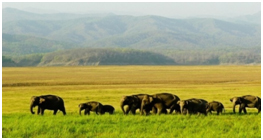 Manas Wildlife Sanctuary is located in the State of Assam in North-East India, a biodiversity hotspot. Covering an area of 39,100 hectares, it spans the Manas river and is bounded to the north by the forests of Bhutan. The Manas Wildlife Sanctuary is part of the core zone of the 283,700 hectares Manas Tiger Reserve, and lies alongside the shifting river channels of the Manas River. The site’s scenic beauty includes a range of forested hills, alluvial grasslands and tropical evergreen forests. The site provides critical and viable habitats for rare and endangered species, including tiger, greater one-horned rhino, swamp deer, pygmy hog and Bengal florican. Manas has exceptional importance within the Indian sub-continent’s protected areas, as one of the most significant remaining natural areas in the region, where sizeable populations of a large number of threatened species continue to survive.
Manas Wildlife Sanctuary is located in the State of Assam in North-East India, a biodiversity hotspot. Covering an area of 39,100 hectares, it spans the Manas river and is bounded to the north by the forests of Bhutan. The Manas Wildlife Sanctuary is part of the core zone of the 283,700 hectares Manas Tiger Reserve, and lies alongside the shifting river channels of the Manas River. The site’s scenic beauty includes a range of forested hills, alluvial grasslands and tropical evergreen forests. The site provides critical and viable habitats for rare and endangered species, including tiger, greater one-horned rhino, swamp deer, pygmy hog and Bengal florican. Manas has exceptional importance within the Indian sub-continent’s protected areas, as one of the most significant remaining natural areas in the region, where sizeable populations of a large number of threatened species continue to survive.
Chakrashila Wildlife Sanctuary, Kokrajhar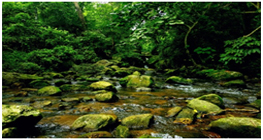 Chakrashila Wildlife Sanctuary is a wildlife sanctuary falling under Kokrajhar district and some adjacent areas of Dhubri district of Assam, India. It is famous for the golden langur and is the second protected habitat for golden langurs in India. The sanctuary covers an area of 45.568 km2 (4556.8 hectares). It is around 6 km from Kokrajhar town, 68 km from Dhubri town and 219 km from Lokpriya Gopinath Bordoloi International Airport, Guwahati. The sanctuary is mainly a hilly tract running north–south and there are two lakes (Dheer Beel and Diplai Beel) on either side, which are integral to the eco-system of the sanctuary. The lower hilly reaches are covered with sal coppice regeneration while middle and upper reaches are covered with mixed deciduous forests. The sanctuary has some tourist accommodation facility at Choraikhola, Kokrajhar and also provides facilities for bird watching, forest trekking, and wildlife and nature photography.
Chakrashila Wildlife Sanctuary is a wildlife sanctuary falling under Kokrajhar district and some adjacent areas of Dhubri district of Assam, India. It is famous for the golden langur and is the second protected habitat for golden langurs in India. The sanctuary covers an area of 45.568 km2 (4556.8 hectares). It is around 6 km from Kokrajhar town, 68 km from Dhubri town and 219 km from Lokpriya Gopinath Bordoloi International Airport, Guwahati. The sanctuary is mainly a hilly tract running north–south and there are two lakes (Dheer Beel and Diplai Beel) on either side, which are integral to the eco-system of the sanctuary. The lower hilly reaches are covered with sal coppice regeneration while middle and upper reaches are covered with mixed deciduous forests. The sanctuary has some tourist accommodation facility at Choraikhola, Kokrajhar and also provides facilities for bird watching, forest trekking, and wildlife and nature photography.
Bornodi Wildlife Sanctuary, Udalguri and Baksa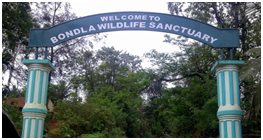 Bornadi Wildlife Sanctuary is a 26.22 km2 (10.12 sq mi) wildlife sanctuary situated on the foothills of Himalayas bordering Bhutan in the north and in Udalguri district and Baksa District of Assam, India. This sanctuary was named after the river Bornadi which flows on its western border. It is 30 km (19 mi) from Tangla town and 130 km (81 mi) from Guwahati. The sanctuary was established in 1980 to protect the hispid hare (Caprolagus hispidus) and pigmy hog (Porcula salvania). It is home to many birds such as the white-capped redstart and the blue magpie, and deer, Himalayan goat and leopard.
Bornadi Wildlife Sanctuary is a 26.22 km2 (10.12 sq mi) wildlife sanctuary situated on the foothills of Himalayas bordering Bhutan in the north and in Udalguri district and Baksa District of Assam, India. This sanctuary was named after the river Bornadi which flows on its western border. It is 30 km (19 mi) from Tangla town and 130 km (81 mi) from Guwahati. The sanctuary was established in 1980 to protect the hispid hare (Caprolagus hispidus) and pigmy hog (Porcula salvania). It is home to many birds such as the white-capped redstart and the blue magpie, and deer, Himalayan goat and leopard.
Kalamati, Chirang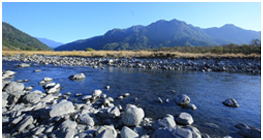 Kalamati is a place in the west of Manas national park, where salty minerals rich black soil can be found which attracts Elephants, Gaurs and Sambar. In black stone or Kalamati, wild Dog and Hispid Hare are spotted. In every year a festival on the sands of the river bank of Kalamati is conducted named after the place.
Kalamati is a place in the west of Manas national park, where salty minerals rich black soil can be found which attracts Elephants, Gaurs and Sambar. In black stone or Kalamati, wild Dog and Hispid Hare are spotted. In every year a festival on the sands of the river bank of Kalamati is conducted named after the place.
Ultapani Reserve Forest, Kokrajhar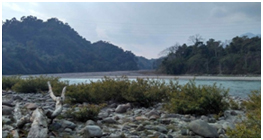 Ultapani Reserve Forest is a biodiversity area situated under Holtugaon Forest Division of Manas Biosphere reserve situated in Kokrajhar district, Assam, India.
Ultapani Reserve Forest is a biodiversity area situated under Holtugaon Forest Division of Manas Biosphere reserve situated in Kokrajhar district, Assam, India.
The name means "The Reverse Water", the river which flows through the forest in the direction west to east unlikely other rivers flows east to west. It is located in Kokrajhar Tehsil of Kokrajhar district in Assam, India. It is situated 55 km away from Kokrajhar, which is both district & sub-district headquarter of Ultapani Forest. Ultapani is the "Haven of Butterfly" and the natural home of Golden langur, famous Great Pied Hornbill and some other RET species. Orchids are also the strength of Ultapani Reserve Forest.
Bhairabkunda, Udalguri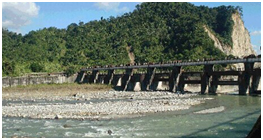 In the district of Udalguri, Bhairabkunda is located in the tri-junction of Bhutan, Assam and Arunachal Pradesh. Interestingly, it is also where three rivers – Dhansiri, Bhairavi and Daifam – meet. Known for a prominent Shiva temple that now lies in Bhutan, this area teems with pilgrims on auspicious days as they come to take a dip in the holy confluence. Reports say that in the past, the Bodo people would perform the holy ceremony of ‘Kherai’ here in praise of Shiva. According to Hindu mythology, Bhim, the second of the Pandavas, spent his ‘agyatvas’ or ‘incognito exile’ here. Bhairabkunda is a peaceful place, with the speedy river Dhansiri rolling across the plains. The wooded river banks are ideal for birding, angling and doing nothing too.
In the district of Udalguri, Bhairabkunda is located in the tri-junction of Bhutan, Assam and Arunachal Pradesh. Interestingly, it is also where three rivers – Dhansiri, Bhairavi and Daifam – meet. Known for a prominent Shiva temple that now lies in Bhutan, this area teems with pilgrims on auspicious days as they come to take a dip in the holy confluence. Reports say that in the past, the Bodo people would perform the holy ceremony of ‘Kherai’ here in praise of Shiva. According to Hindu mythology, Bhim, the second of the Pandavas, spent his ‘agyatvas’ or ‘incognito exile’ here. Bhairabkunda is a peaceful place, with the speedy river Dhansiri rolling across the plains. The wooded river banks are ideal for birding, angling and doing nothing too.
In autumn the Bodo countryside, particularly the riverside, transforms into a beautiful landscape of tall, white blooms of wild sugarcane grass or kohua as it is locally known. The sway of the slender perennial grass in the wind evokes strong memories for those who have grown up in the Northeast.
In his famous song Kohua bon, the legendary singer Bhupen Hazarika likens his restless mind, his ‘ashanta mon,’ to the nodding, ever-moving blooms of the kohua. However, the odd thing is that if you sit long enough, listening to the sound of silence, the mind falls quiet too – like the ripples of a pond fading into stillness.
Deeplaibeel, Kokrajhar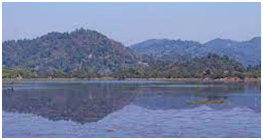 Deeplaibeel is a wet land, situated south to the Kokrajhar town.. Landscaped over 1.5 hectares on the banks of the lake, this is a beautiful garden overlooking the lake. It is the homeland to a large number of birds both migratory and local, and also different species of amphibians are observed here.
Deeplaibeel is a wet land, situated south to the Kokrajhar town.. Landscaped over 1.5 hectares on the banks of the lake, this is a beautiful garden overlooking the lake. It is the homeland to a large number of birds both migratory and local, and also different species of amphibians are observed here.
Economy of the Council
The economy of Bodoland Territorial Region (BTR) is a vibrant and diverse one, with a range of sectors contributing to its growth and development. BTR has a rich natural resource base, including forests, minerals, water and biodiversity, which provide livelihoods and income for many people. BTR also has a strong agricultural sector, with rice, jute, tea, fruits and vegetables being the main crops. There are many aspects of economic development in the territory have been undertaken by the Council like in term of Agriculture sector, Fishery department, Industrial Sector, market sector, sericulture department and tourism. Almost 80 percent improvement or development has been taken by the Council. To enhance the economic conditions of the region there are many inclusive policies are framed to connect with all the villages with a proper road linkages and other infrastructure like sports complex, cultural complex, academic infrastructure like schools, colleges and others.
BTR is committed to achieving inclusive and sustainable development, by promoting social justice, environmental conservation and good governance. BTR is proud of its achievements and potentials, and strives to overcome its challenges and realize its aspirations.
Karbi Anglong Autonomous Council
Karbi Anglong District Council was formed on 17th November, 1951 and the Karbi Anglong Autonomous Council (earlier known as Karbi Anglong District Council) was constituted on 23rd June, 1952 under Article 244(2) read with the Sixth Scheduled to the Constitution of India. Article 244(2) provides- “The provisions of the Sixth Schedule shall apply to the administration of the tribal areas in the State of Assam, Meghalaya, Tripura and Mizoram”. The Karbi Anglong Autonomous Council covers the entire area of the Karbi Anglong district of Assam having an area of 10.434 Sq Km with a population of 9,65, 280 (as per 2011 Census). There is an Executive Committee headed by the Chief Executive Member (CEM) and 14 Executive Members (EMs) to exercise the functions of the Karbi Anglong Autonomous Council as per Constitutional provisions. The Council is constituted with 26 Nos. of elected Members and 4 nominated Members and is responsible for development of the areas as envisaged in the said provisions. The Chief Executive Member is elected by the Members of the Council and other Executive Members are nominated by the CEM and the Governor of Assam formally appoints both the Chief Executive Member and other Executive Members.
Council Secretariat Structure

Legislative Members along with Names and Phone Numbers
| Constituency No. | Constituency Name | Name of Elected Members of Autonomous Council |
|---|---|---|
| 1. | DuarAmla | Shri Prabhat Chandra Taro |
| 2. | Amri | Shri D. UphingMaslai |
| 3. | Chinthong | Shri AvijitKro |
| 4. | Socheng | Shri HeadsingRongphar |
| 5. | Rongkhang | Shri LongbisonBey |
| 6. | BithungRengthama | Dr. TuliramRonghang |
| 7 | Kopili | Shri Pawan Kumar |
| 8 | Hamren | Shri Mongal Sing Timung |
| 9 | Amreng | Smt. Rina Terangpi |
| 10 | Howraghat | Shri Ajit Kumar Dey |
| 11 | Langfer | Shri MadhuramLekthe |
| 12 | Phuloni | Shri Kangbura Killing |
| 13 | Langhin | Shri Bili Mohan Khaklari |
| 14 | Karkanthi | Shri Raju Tisso |
| 15 | Mahamaya | Shri LunsingTeron |
| 16 | Nomati | Shri RiteshEnghi |
| 17 | SochengDhenta | Smt. KacheRongpipi |
| 18 | Lumbajong | Shri JohnyTimung |
| 19 | Dhansiri | Smt. TiluttomaHasnu |
| 20 | Singhason | Shri Amar Sing Tisso |
| 21 | Borjan | Shri SurjyaRongphar |
| 22 | Sarupathar | Smt. KadomTerangpi |
| 23 | Bokajan | Shri MadhurjaDhekiaPhukan |
| 24 | Deopani | Shri ShrabanTelenga |
| 25 | Nilip | Shri PabitraRongpi |
| 26 | DuarBagori | Shri Richard Tokbi |
Executive Council Members along with Names and Phone Numbers
| Sl. No. | Name of Executive Member | Designation |
|---|---|---|
| 1 | Dr. Tuliram Ronghang | Chief Executive Member |
| 2 | Shri D Uphing Maslai | Executive Member |
| 3 | Shri Mongal Sing Timung | Executive Member |
| 4 | Smt. Rina Terangpi | Executive Member |
| 5 | Shri Prabhat Chandra Taro | Executive Member |
| 6 | Shri MadhuramLekthe | Executive Member |
| 7 | Shri Kangbura Killing | Executive Member |
| 8 | Shri Bili Mohan Khaklari | Executive Member |
| 9 | Shri LunsingTeron | Executive Member |
| 10 | Shri RiteshEnghi | Executive Member |
| 11 | Shri Amar Sing Tisso | Executive Member |
| 12 | Shri SurjyaRongphar | Executive Member |
| 13 | Shri Richard Tokbi | Executive Member |
| 14 | Shri MukutMahanta | Executive Member |
Secretariat Members along with Names and Phone Numbers
| Sl No. | Name of Officers | Subjects/Departments |
|---|---|---|
| 1 | Shri Mukul Kumar Saikia, IAS Principal Secretary, KAAC |
i) Finance. ii) All Central Sector/Centrally Sponsered schemes. iii) Any Subjects/Departments not allotted to any Secretary. |
| 2 | Shri Si-im Taro, ACS Secretary,KAAC |
i) Irrigation. ii) PHE. iii) Agriculture. iv) Industries & Commerce. v) KAAC Works Department. vi) Matters related to WPT&BC. vii) Nodal Officer for organizing Coaching for the candidates of KAAC area appearing Combined Civil Services Examinations being conducted by UPSC and APSC. viii) 1st Appellate Authority of the Departments entrusted to him in regards to RTI matter. |
| 3 | Smt. Nirola Phangchopi,ACS Secretary, KAAC |
i) Education- Elementary, Secondary, Higher including Library Services,Adult Education and Diphu Polytechnic. ii) PWD. iii) Animal Husbandry & Veterinary. iv) Flood Control (Water Resources) v) Environment & Forest. vi) DDO (transferred sector)signing of Cheques. vii) 1st Appellate Authority of the Departments entrusted to her in regards to RTI matter. |
| 4 | Shri MukulKathar, ACS Secretary, KAAC |
i) Soil Conservation. ii) Taxation. iii) Health & Family Welfare. iv) Land Revenue, Land Reform and Settlement Department. v) Matter related to Border Development / Border Issues. vi) Maintenance of KarbiBhawans ,Hemtun. vii) Nodal Officer of Dhansiri Hydrocarbon Exploration. viii) Nodal Officer of Construction of KarbiBhawans (New Delhi and Shillong). ix) Secretary to Hon’ble CEM. x) Co-ordinator for Taxation purpose/matter with revenue earning Deptt. xi) Engaged for 90% MV Tax, deposit of State Excise Revenue Sale tax into the KAAC Head of Account in pursuance of MoU and subsequent OM. xii) Post Creation in respect of West KarbiAnglong District. xiii) 1st Appellate Authority of the Departments entrusted to him in regards to RTI matter. |
| 5 | Shri HerolousMillik,ACS Joint Secretary, KAAC |
i) Fisheries. ii) Sericulture. iii) Legal Metrology. iv) Excise. v) Archaeology and Museum. vi) 1st Appellate Authority of the Departments entrusted to him in regards to RTI matter. |
| 6 | Smt. Lolita Rongpipi,ACS Joint Secretary, KAAC |
|
| 7 | Shri DilipTerang, ACS Joint Secretary,KAAC |
i) Transformation & Development Dept. ii) Implementation of MoU. iii) Co-operation. iv) Tourism. v) Power. vi) P&RD. vii) Town Committee Affairs and Town & Country Planning. viii) FCS & CA. ix) Mines & Minerals related matters. x) Sports & Youth Welfare. xi) 1st Appellate Authority of the Departments entrusted to him in regards to RTI matter. |
| 8 | Shri TensonEngti, Joint Secretary, KAAC |
i) GAD. ii) Education- Elementary, Secondary, Higher including Library Services, Adult Education and Diphu Polytechnic. iii) Environment & Forest. iv) 1st Appellate Authority for the Department of GAD in regards to RTI matter. v) SPIO (1) of the Department entrusted to him in regards to RTI. |
| 9 | Shri BirsingEngti, Joint Secretary, KAAC |
i) Legislative/ Parliamentary Affairs. ii) Maintenance of Session Hall, Members Hostel & Students Hostels. iii) Signing of Cheques Council Sector. iv) Nodal Officer, Implementation of Assam Citizen Centric Service Delivery Project (ACCSDP). v)1st Appellate Authority of the Departments entrusted to him in regards to RTI matter. |
| 10 | Shri Tensing Rongpi, Joint Secretary,KAAC |
i) Relief and Rehabilitation. ii) Land Revenue, Land Reform and Settlement. iii) CALA, Revenue. iv) Nodal Officer, EkalavyaVidyalaya. v) 1st Appellate Authority of the Departments entrusted to him in regards to RTI matter. |
| 11 | Smt. NirupamaTimungpi, Joint Secretary, KAAC |
i) Primary Education. ii) Art & Culture. iii) Cultural Affairs. iv) Karbi Language Development Board. v) Animal Husbadry& Veterinary. vi) 1st Appellate Authority of the Departments entrusted to her in regards to RTI matter. vii) SPIO (1) of A.H. &Vety Department in regards to RTI matter. |
| 12 | Shri Michael Timung, Joint Secretary, KAAC |
i) Personnel-A. ii) Handloom & Textiles. iii) Nodal Officer, Hon’ble NGT. iv) Border Development/ Border Issues pertaining to KarbiAnglong District. v) Nodal Officer of Census Operation of KAAC in order to coordinate with the Deputy Commissioners of KarbiAnglong& West KarbiAnglong District on all Census Operations related matters. vi) 1st Appellate Authority of the Departments entrusted to him in regards to RTI matter. |
| 13 | Shri Richard Rongpi, ACS Deputy Secretary, KAAC |
i) Personnel-B. ii) Social Welfare & ICDS (All file of SNP and Central Sector schemes should be routed to CEM through PS, KAAC). iii) Public Grievances Cell. iv) Memorandum of various Organizations/ Political Parties etc. v) Information & Public Relation. vi) Information & Technology and e-Office. vii) Printing & Stationery Dept. viii) Skill Development. ix) 1st Appellate Authority of the Departments entrusted to him in regards to RTI matter. |
| 14 | Shri Sanjay Hanse, Deputy Secretary, KAAC |
i) Deputy Secretary to Hon’ble CEM, KAAC. ii) Transport. iii) Finance Department. iv) Liason Officer, Guwahati. v) SPIO of the Department entrusted to him in regards to RTI matter. |
| 15 | Shri SonasingTerang, Deputy Secretary, KAAC |
i) OSD i/c Hamren Branch Secretariat. ii) CPF. iii) Primary Education. iv) Cultural Affairs. v) Art & Culture. vi) PHE. vii) Soil Conservation. viii) Industries & Commerce. ix) Archeology& Museum. x) Fishery. xi) Taxation. xii) Border Development/ Border Issues pertaining to West KarbiAnglong District. xiii) SPIO of the Departments entrusted to him in regards to RTI matter. |
| 16 | Shri AngtangTisso, Deputy Secretary, KAAC |
i) Legislative. ii) Liason Officer, Guwahati (attached). iii) Town Committee affairs and Town & Country Planning. iv) Sericulture. v) SPIO of the Departments entrusted to him in regards to RTI matter. |
| 17 | Shri DeuriRonghang, Deputy Secretary, KAAC |
i) Estate Officer. ii) GAD. iii) Personnel-A. iv) Co-operation. v) PWD. vi) Information & Technology. vii) Nazarat. viii) Agriculture. ix) Irrigation. x) Water Resources. xi) FCS&CA. xii) SPIO of the Departments entrusted to him in regards to RTI matter. |
| 18 | Shri TarunEngti, Deputy Secretary, KAAC |
i) Land Revenue, Land Reform and Settlement. ii) SPIO of the Departments entrusted to him in regards to RTI matter. |
| 19 | Shri RasoBey, Under Secretary, KAAC |
i) i/c Member Hostels &KarbiBhawan, Kolkata. ii) GAD. iii) SPIO of the Departments entrusted to him in regards to RTI matter. |
| 20 | Shri DipanjitBaruah, Under Secretary, KAAC |
i) Protocol Duties. ii) Legal Metrology Department. iii) Handloom & Textiles. iv) SPIO of the Departments entrusted to him in regards to RTI matter. |
| 21 | Shri SarimRonghang, Under Secretary,KAAC |
i) Sports & Youth Welfare. ii) Power. iii) Monitoring of Aadhar seeding of Ration Card under NFSA. |
| 22 | Smt. Rebecca Rongpipi, Under Secretary,KAAC |
i) Sericulture. ii) Tourism. iii) Monitoring of Aadhar seeding of Ration Card under NFSA. |
| 23 | Smt. SerlinaEnglengpi, Under Secretary, KAAC |
i) Co-operation. ii) FCS & CA. iii) Monitoring of Aadhar seeding of Ration Card under NFSA. |
| 24 | Shri Cornellius Tisso, Under Secretary, KAAC |
i) Transformation & Development Dept. ii) Implementation of MoS. iii) Monitoring of Aadhar seeding of Ration Card under NFSA. |
| 25 | Shri Pabitra Kr. Sarmah, AFS Sr. Finance & Accounts Officer |
i) Sr. F&AO (T). ii) SPIO of Department of Finance and Accounts Transferred and Central Sector in regards to RTI matter. |
| 26 | Shri Herbert Kro, i/c Finance & Accounts Officer |
i) F&AO(C). ii)SPIO of Department of Finance and Accounts Council Sector in regards to RTI matter. |
| 27 | Shri SabrasiTimung, Sr. Research Officer |
i) SRO, Transformation & Development Dept. ii)SPIO of Department of Transformation & Development Department in regards to RTI matter. |
Council Map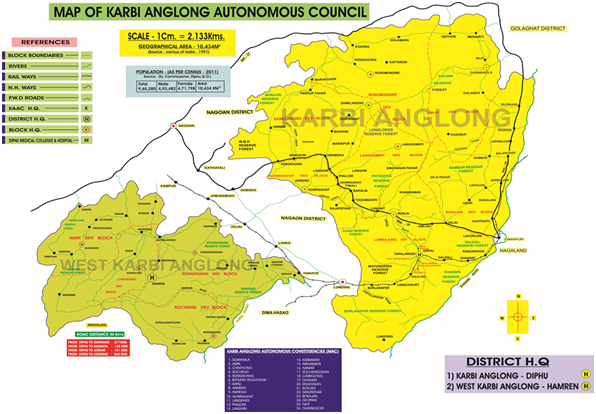
Places of Tourist Interest
Deopani Durga Mandir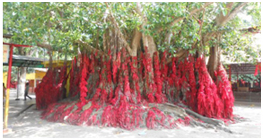 Deopani Mandir is a beautiful temple surrounded by tea gardens on all sides, in KarbiAnglong Assam. It is a temple devoted to the Goddess Durga. The temple premise also has a small pond inside it. There is also a huge banyan tree inside the premises of the temple. This tree is considered to be a scared tree and devotees of Maa Durga visiting this temple often tie red ribbons on the tree. It is believed that if you make a wish while tying a ribbon on the tree, the wish is granted by the Goddess herself. After the fulfilment of which, one is required to come and untie the ribbon.
Deopani Mandir is a beautiful temple surrounded by tea gardens on all sides, in KarbiAnglong Assam. It is a temple devoted to the Goddess Durga. The temple premise also has a small pond inside it. There is also a huge banyan tree inside the premises of the temple. This tree is considered to be a scared tree and devotees of Maa Durga visiting this temple often tie red ribbons on the tree. It is believed that if you make a wish while tying a ribbon on the tree, the wish is granted by the Goddess herself. After the fulfilment of which, one is required to come and untie the ribbon.
Kalioni Buddhist Temple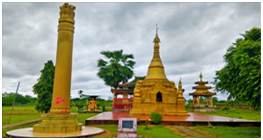 The KALIONI BUDDHIST TEMPLE, also known as the Buddhist Monastery of BhitarKalioni, is a religious and cultural center for the Buddhist community in KarbiAnglong district of Assam, India. The temple was established in 2009 by the KarbiAnglong Buddhist Association (KABA) with the support of the local people and the government. The temple is situated on a hilltop surrounded by lush greenery and offers a serene and peaceful environment for meditation and worship. The temple has a main shrine hall, a library, a meditation hall, a guest house, and adining hall. The temple also organizes various activities and events for the promotion of Buddhism and social welfare, such as Dhamma talks, meditation camps, blood donation camps, free medical camps, etc. The temple is open to all visitors who wish to learn about Buddhism and experience its teachings.
The KALIONI BUDDHIST TEMPLE, also known as the Buddhist Monastery of BhitarKalioni, is a religious and cultural center for the Buddhist community in KarbiAnglong district of Assam, India. The temple was established in 2009 by the KarbiAnglong Buddhist Association (KABA) with the support of the local people and the government. The temple is situated on a hilltop surrounded by lush greenery and offers a serene and peaceful environment for meditation and worship. The temple has a main shrine hall, a library, a meditation hall, a guest house, and adining hall. The temple also organizes various activities and events for the promotion of Buddhism and social welfare, such as Dhamma talks, meditation camps, blood donation camps, free medical camps, etc. The temple is open to all visitors who wish to learn about Buddhism and experience its teachings.
Mahamaya Mandir, Dokmoka Mahamaya Mandir is a temple dedicated to Maha Lakshmi Mai, located on top of a hill in Dokmoka, a town in KarbiAnglong district of Assam. The temple is about 400 years old and is considered to be one of the ancient temples in the region. The temple is also associated with Thong Nokbe, the strongest god in the Karbi community, whose left foot symbol still remains in the temple. The temple offers a panoramic view of the surrounding hills and valleys from all four sides. There is also a big natural lake near the temple, which adds to its beauty and serenity. MahamayaMandir is a popular tourist spot and a pilgrimage destination for devotees of Maha Lakshmi Mai and Thong Nokbe.
Mahamaya Mandir is a temple dedicated to Maha Lakshmi Mai, located on top of a hill in Dokmoka, a town in KarbiAnglong district of Assam. The temple is about 400 years old and is considered to be one of the ancient temples in the region. The temple is also associated with Thong Nokbe, the strongest god in the Karbi community, whose left foot symbol still remains in the temple. The temple offers a panoramic view of the surrounding hills and valleys from all four sides. There is also a big natural lake near the temple, which adds to its beauty and serenity. MahamayaMandir is a popular tourist spot and a pilgrimage destination for devotees of Maha Lakshmi Mai and Thong Nokbe.
Longsokangthu, Siloni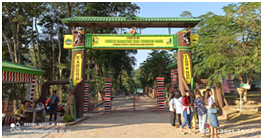 One of the most preferred spots for a fun-loving holiday is the Siloni Picnic Spot. Also known as Longsokangthu Picnic Spot, it is located 24 km north of Diphu (towards Manjha) and is a protected piece of land looked after by the Department of Environment and Forest. Tourists can enjoy the surrounding river and mountain views, and cook and barbecue inside the park.They can moreover play music and dance.All in all, Siloni Picnic Spot is an ideal one-day picnic spot for families and big groups staying in Diphu.
One of the most preferred spots for a fun-loving holiday is the Siloni Picnic Spot. Also known as Longsokangthu Picnic Spot, it is located 24 km north of Diphu (towards Manjha) and is a protected piece of land looked after by the Department of Environment and Forest. Tourists can enjoy the surrounding river and mountain views, and cook and barbecue inside the park.They can moreover play music and dance.All in all, Siloni Picnic Spot is an ideal one-day picnic spot for families and big groups staying in Diphu.
Thai Apser Thai Apser waterfall is a natural waterfall located at Arting village in West Karbi Anglong district of Assam, India. It is a popular tourist attraction that offers scenic views of the surrounding hills and forests. The waterfall is named after Thai Apser, a legendary hero of the Karbi tribe who fought against the British colonialists. The waterfall is also a sacred place for the Karbi people who perform rituals and festivals there.
Thai Apser waterfall is a natural waterfall located at Arting village in West Karbi Anglong district of Assam, India. It is a popular tourist attraction that offers scenic views of the surrounding hills and forests. The waterfall is named after Thai Apser, a legendary hero of the Karbi tribe who fought against the British colonialists. The waterfall is also a sacred place for the Karbi people who perform rituals and festivals there.
Arboretum Park, Matipung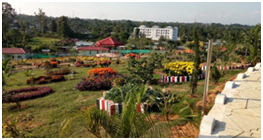 Located around 8 Km from central Diphu in the locality of Matipung, Arboretum Cum Craft Centre is a planned complex consisting of a park, garden and a craft and exhibition centre. The garden is well maintained throughout the year and has a variety of annual and seasonal flowers on display throughout the year. There is also a small park area for children to play in.
Located around 8 Km from central Diphu in the locality of Matipung, Arboretum Cum Craft Centre is a planned complex consisting of a park, garden and a craft and exhibition centre. The garden is well maintained throughout the year and has a variety of annual and seasonal flowers on display throughout the year. There is also a small park area for children to play in.
The Arboretum Cum Craft Centre also houses an open-air stage where events can take place. There is also an indoor hall where smaller events or exhibitions can be organised. While visiting the Arboretum, if you are looking for refreshments, you can head to the cafeteria. Be sure to check the traditional exhibit store where you can buy clothes and souvenirs from the region.
Taralangso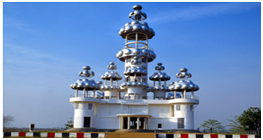 Taralangso, Diphu is a cultural centre that showcases the tribal dances of various communities in Assam. It is maintained by the Karbi Cultural Society and has an open auditorium and amphitheater. One can enjoy the performances of the local artists and learn about their traditions and customs. Taralangso is located in a scenic landscape surrounded by hills and forests. It is one of the major tourist attractions in Diphu, along with the Botanical Garden, the District Museum, the Arboretum and Umwang .
Taralangso, Diphu is a cultural centre that showcases the tribal dances of various communities in Assam. It is maintained by the Karbi Cultural Society and has an open auditorium and amphitheater. One can enjoy the performances of the local artists and learn about their traditions and customs. Taralangso is located in a scenic landscape surrounded by hills and forests. It is one of the major tourist attractions in Diphu, along with the Botanical Garden, the District Museum, the Arboretum and Umwang .
Bheloghat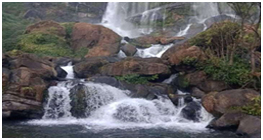 Bheloghat Waterfall is one of amazing waterfalls which is located in the KarbiAnglongdistrict in the state of Assam. The nearest town to the waterfall is situated at 8 0km called Nagaon. It is reputed to be Karbi Anglong’s biggest waterfall. The fact that this waterfall falls continuously throughout the year is its outstanding feature.
Bheloghat Waterfall is one of amazing waterfalls which is located in the KarbiAnglongdistrict in the state of Assam. The nearest town to the waterfall is situated at 8 0km called Nagaon. It is reputed to be Karbi Anglong’s biggest waterfall. The fact that this waterfall falls continuously throughout the year is its outstanding feature.
Economy of the Council
The economy of Karbi Anglong Autonomous Council is one of the most vibrant and diverse in the state of Assam. The council, which covers an area of 10,434 square kilometers, is home to various ethnic groups, cultures, and natural resources. The council has a rich agricultural sector, producing crops such as rice, maize, ginger, turmeric, and tea. The council also has a thriving horticulture industry, with fruits like pineapple, banana, orange, and lemon being grown in abundance. The council is endowed with mineral resources such as coal, limestone, iron ore, and granite, which offer immense potential for industrial development. The council also has a strong tourism sector, attracting visitors from across the country and abroad with its scenic beauty, wildlife sanctuaries, historical monuments, and cultural festivals. The council is committed to improving the quality of life of its people by providing better infrastructure, education, health care, and social welfare. The council is also working towards preserving its environment and promoting sustainable development. The economy of Karbi Anglong Autonomous Council is a shining example of how a region can achieve economic growth while maintaining its cultural diversity and ecological balance.
North Cachar Hills Autonomous Council:-
North Cachar Hills Autonomous Council in Assam was set up on 29th April 1952 under Article 244(2) read with the Sixth Scheduled to the Constitution of India. Article 244(2) provides- “The provisions of the Sixth Schedule shall apply to the administration of the tribal areas in the State of Assam, Meghalaya, Tripura and Mizoram”. It was renamed as North Cachar Hills Autonomous Council (NCHAC) on 13th September, 1995. The district was renamed as “Dima Hasao” on 30th March, 2010”. The Dima Hasao District has an area of 4,890 sq. Km which is 6.24 % of the total area of the State with a total population of 2,13,529 (as per 2011 Census). There is an Executive Committee headed by the Chief Executive Member and 14 Executive Members to exercise the functions of the North Cachar Hills Autonomous Council as per Constitutional provisions. The Council is constituted with 28 Nos. of elected Members and 2 nominated Members and is responsible for development of the areas as envisaged in the said provisions. The Chief Executive Member is elected by the Members of the Council and other Executive Members are nominated by the Chief Executive Member and the Governor of Assam formally appoints both the CEM and other Executive Members.
Council Secretariat Structure
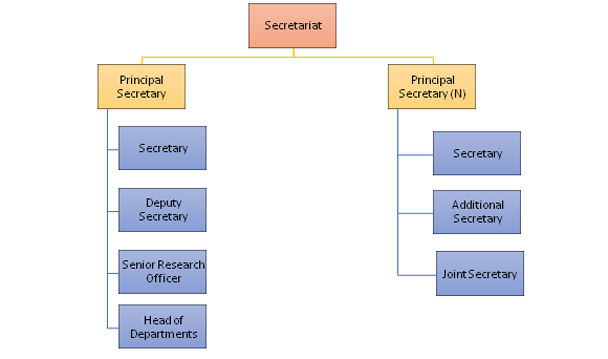
Legislative and Executive Council Members
| No. and Name of Constituency | Name of Member | Current Designation |
|---|---|---|
| 19-Dehangi | Shri. Debolal Gorlosa | Chief Executive Member |
| 28-Semkhor | Smti. Ranu Langthasa | Chairman |
| 15-Hatikhali | Shri. Bimal Hojai | Deputy Chairman |
| 7- Laisong | Shri. Paudaming Nriame | Executive Member |
| 8-Daotuhaja | Shri. Nipolal Hojai | Executive Member |
| 10-Maibang West | Shri. Bijit Langthasa | Executive Member |
| 11-Kalachand | Shri. Ratan Jarambusa | Executive Member |
| 12-Wajao | Shri. Biswajit Daulagupu | Executive Member |
| 13-Hajadisa | Shri. Projith Hojai | Executive Member |
| 14-Langting | Shri. Golonjo Thaosen | Executive Member |
| 18-Kharthong | Shri. Lalremsiama Darnei | Executive Member |
| 20-Gunjung | Shri. Nojit Kemprai | Executive Member |
| 21-Hadingma | Shri. Devojit Bathari | Executive Member |
| 22-Dihamlai | Shri. Ramgalungbe Jeme | Executive Member |
| 23-Harangajao | Shri. Amendu Hojai | Executive Member |
| 25-Lower Khartong | Shri. Ngamrothang Hmar | Executive Member |
| 27-Diger | Shri. Hen Samuel Changsan | Executive Member |
| 1-Haflong | Shri. Daniel Langthasa | Member of Autonomous Council |
| 2-Jatinga | Shri. Fleming Rupsi Shylla | Member of Autonomous Council |
| 3- Borail | Shri. Ngulminlal Lienthang | Member of Autonomous Council |
| 4- Mahur | Shri. Rahul Naiding | Member of Autonomous Council |
| 5-Jinam | Shri. Zosumthang Hmar | Member of Autonomous Council |
| 6- Hangrum | Shri. Noah Daime | Member of Autonomous Council |
| 9-Maibang East | Smti. Nandita Gorlosa | Member of Autonomous Council |
| 16- Diyungbra | Shri. Nobojit Hojai | Member of Autonomous Council |
| 17- Garampani | Shri. Joysing Durong | Member of Autonomous Council |
| 24- Hamri | Shri. Monjit Naiding | Member of Autonomous Council |
| 26- Dolong | Shri Suangthangjem Hrangkhol | Member of Autonomous Council |
| Shri. Liton Chakraborty (Nominated) |
Member of Autonomous Council | |
| Shri. Issory Prasad Joishi (Nominated) |
Member of Autonomous Council |
Officials of NCHAC
| Sl. No | Name | Designation | Subjects |
|---|---|---|---|
| 1 | Debanon Daulagupu | Principal Secretary (N) | Forest & Environment, Land Revenue, Land Reforms and Settlement |
| 2 | Rajit Karigapsa | Secretary (N) | PWD, Legislative |
| 3 | Saivongjem Hrangkhol | Additional Secretary | Council Works |
| 4 | Hrishikesh Upadhaya | Joint Secretary | Council Works |
| 5 | Uttam Daolagupu | Additional Secretary | Land Revenue, Land Revenue, Land Reforms and Settlement |
| 6 | Thai Tsho Daulagupu (Acs) | Principal Secretary | Forest & Environment, Handloom & Textile, Information & Public Relation, Nazarat/GAD, Personnel (A), Personnel (B), Planning & Development, PWD, Social Welfare & ICDS, Sports & Youth Welfare |
| 7 | Magonjoy Thaosen (Acs) | Deputy Secretary | Co-operation, Legal Metrology, Sericulture |
| 8 | Rebecca L. Changsan (Acs) | Deputy Secretary | Cultural Affairs, Excise, Museum, Adult Education and Diphu Polytechnic |
| 9 | Sajya Hojai | Secretary(N) | Finance, Taxation |
| 10 | Hungkeukam Nriame | Secretary(N) | Cultural Affairs, Town Committee Affairs |
Council Map
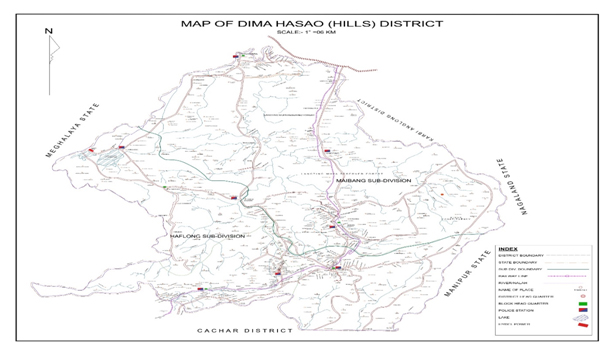
Places of tourist interest
Maibang Valley, Dima Hasao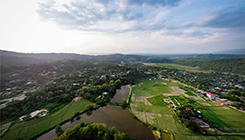 Maibang, is a town area committee in Dima Hasao district in the Indian state of Assam. Maibang is also one of the three sub-divisions of Dima Hasao District. It was once the capital of the Dimasa Kachari Kingdom. There is a stone house of Dimasa king.
Maibang, is a town area committee in Dima Hasao district in the Indian state of Assam. Maibang is also one of the three sub-divisions of Dima Hasao District. It was once the capital of the Dimasa Kachari Kingdom. There is a stone house of Dimasa king.
Tourist attractions in Maibang include:
- Rajbari: ruins of city of the Kachari Kingdom, on the south side of Maibang.
- Stone house: a monolithic ancient Indian temple from the 12th century with two roofs.
- Maibang Waterfalls: Maibang has several waterfalls around the city.
Seilkal Peak, Haflong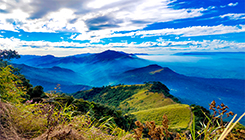 Sielkal Peak- The beautiful peak in Assam is also known as white ant hillock. It is situated at an altitude of 680 m above sea level and is ideal for a peaceful holiday. Mt Sielkal Peak (over 1500 metres above sea level) one of the most beautiful trekking point in the Borail mountain range. One can start on early morning trek from the village name P.Leikul . Breakfast, Drinking water , light snacks and local guide is available at the village start point . Monsoon times should be avoided due the slippery trekking route. After reaching the top view or trekking summit point one can return the same day as its hardly two to three hours hiking for even moderate trekkers .
Sielkal Peak- The beautiful peak in Assam is also known as white ant hillock. It is situated at an altitude of 680 m above sea level and is ideal for a peaceful holiday. Mt Sielkal Peak (over 1500 metres above sea level) one of the most beautiful trekking point in the Borail mountain range. One can start on early morning trek from the village name P.Leikul . Breakfast, Drinking water , light snacks and local guide is available at the village start point . Monsoon times should be avoided due the slippery trekking route. After reaching the top view or trekking summit point one can return the same day as its hardly two to three hours hiking for even moderate trekkers .
Halflong Lake, Haflong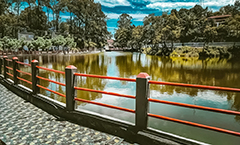 Undoubtedly one of the most beautiful lakes of Assam, Haflong Lake is the major tourist destination of the town. This lake is perfect tourist spot for several reasons and located at the heart of the hill station. One of the largest natural water bodies of Assam, Haflong Lake offers a variety of leisure activities, like boating. The lake is well-maintained and clean as it is protected by Dima Hasao Tourist-Forest Department and Dima Hasao Autonomous Council. The surroundings of the lake offer a haven for thousands of migratory birds in winter.
Undoubtedly one of the most beautiful lakes of Assam, Haflong Lake is the major tourist destination of the town. This lake is perfect tourist spot for several reasons and located at the heart of the hill station. One of the largest natural water bodies of Assam, Haflong Lake offers a variety of leisure activities, like boating. The lake is well-maintained and clean as it is protected by Dima Hasao Tourist-Forest Department and Dima Hasao Autonomous Council. The surroundings of the lake offer a haven for thousands of migratory birds in winter.
Panimur Waterfall, Dima Hasao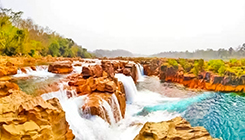 Panimur is a renowned location owing its reputation to the multitude of waterfalls and rapids along the Kopili river. The colour of the water ranges from turquoise to kerosene-blue depending on the seasons and is a prime location for sightseeing, picnics, camping and other tourist activities. It is located about 120 kilometers from Haflong and is well-connected by roads. This location is also revered by the Dimasa tribe as a pilgrimage site where they take holy baths on every Magh Purnima.
Panimur is a renowned location owing its reputation to the multitude of waterfalls and rapids along the Kopili river. The colour of the water ranges from turquoise to kerosene-blue depending on the seasons and is a prime location for sightseeing, picnics, camping and other tourist activities. It is located about 120 kilometers from Haflong and is well-connected by roads. This location is also revered by the Dimasa tribe as a pilgrimage site where they take holy baths on every Magh Purnima.
Bendao Baiglai Waterfall, Dima Hasao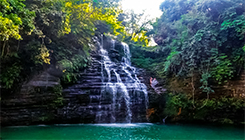 About 13 kms from Haflong, there is a village named Samparidisa which has been declared as one of the Swachh villages of Assam by the state government. Bendao Baglai Waterfalls is located around 3 kms from this village. This area is home to three magnificent waterfalls nestled amid the lush green forests of Dima Hasao.
About 13 kms from Haflong, there is a village named Samparidisa which has been declared as one of the Swachh villages of Assam by the state government. Bendao Baglai Waterfalls is located around 3 kms from this village. This area is home to three magnificent waterfalls nestled amid the lush green forests of Dima Hasao.
Didaodip Waterfall, Dima Hasao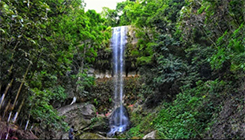 Didaodip Waterfall is situated about 5 km away from Didaodip village near NH-54 Maibang which has enchanting breath-taking view for all persons who love nature.
Didaodip Waterfall is situated about 5 km away from Didaodip village near NH-54 Maibang which has enchanting breath-taking view for all persons who love nature.
Miyungma Daogah Waterfall, Umrangso 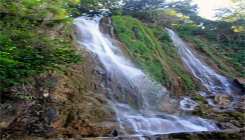 Miyungma Daogah Waterfall is a hidden gem in the Dima Hasao district of Assam. It is a place where nature's beauty and tranquility are in perfect harmony. The waterfall cascades from a height of about 100 meters, creating a misty veil that shimmers in the sunlight. The sound of the falling water is soothing and relaxing, as if it is singing a lullaby to the visitors. The surrounding forest is rich in biodiversity, with various plants and animals coexisting peacefully. Miyungma Daogah Waterfall is a paradise for nature lovers, photographers, and adventurers who want to experience the magic of this unspoiled wonder.
Miyungma Daogah Waterfall is a hidden gem in the Dima Hasao district of Assam. It is a place where nature's beauty and tranquility are in perfect harmony. The waterfall cascades from a height of about 100 meters, creating a misty veil that shimmers in the sunlight. The sound of the falling water is soothing and relaxing, as if it is singing a lullaby to the visitors. The surrounding forest is rich in biodiversity, with various plants and animals coexisting peacefully. Miyungma Daogah Waterfall is a paradise for nature lovers, photographers, and adventurers who want to experience the magic of this unspoiled wonder.
Asalu Fort, Dima Hasao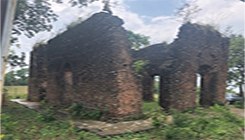 ASALU Fort is a fort that was built by the Dimasa kings in the 17th century as a defensive stronghold against the Mughals and the Ahoms. It is surrounded by thick forests, streams and waterfalls, creating a serene and scenic atmosphere. The fort has a unique architecture, with stone walls, bastions, tunnels and chambers. Some of the chambers are believed to be secret passages that lead to other forts in the region. The fort also has a temple dedicated to Lord Shiva, where the kings used to worship and offer sacrifices. ASALU Fort is a place of mystery and beauty, where one can explore the rich culture and heritage of the Dimasa people.
ASALU Fort is a fort that was built by the Dimasa kings in the 17th century as a defensive stronghold against the Mughals and the Ahoms. It is surrounded by thick forests, streams and waterfalls, creating a serene and scenic atmosphere. The fort has a unique architecture, with stone walls, bastions, tunnels and chambers. Some of the chambers are believed to be secret passages that lead to other forts in the region. The fort also has a temple dedicated to Lord Shiva, where the kings used to worship and offer sacrifices. ASALU Fort is a place of mystery and beauty, where one can explore the rich culture and heritage of the Dimasa people.
Daojali Hading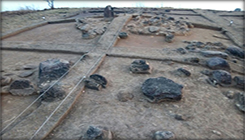 Daojali Hading is a neolithic site in Dima Hasao District of Assam, India on a low hillock about 1000 feet above sea level, dated to about 2,700 years before present. Excavated in 1961-63 by a team led by M C Goswami and T C Sharma, it is the first stratified neolithic site discovered in Northeast India. The excavation yielded typical shouldered celts and cord-marked pottery. The cord-marked pottery is a unique characteristic that this site shares with Sarutaru and other Northeast Indian Neolithic sites that is rare in the Indian Neolithic cultures—suggesting East and Southeast Asian cultural affinities, Hoabinhian in particular.
Daojali Hading is a neolithic site in Dima Hasao District of Assam, India on a low hillock about 1000 feet above sea level, dated to about 2,700 years before present. Excavated in 1961-63 by a team led by M C Goswami and T C Sharma, it is the first stratified neolithic site discovered in Northeast India. The excavation yielded typical shouldered celts and cord-marked pottery. The cord-marked pottery is a unique characteristic that this site shares with Sarutaru and other Northeast Indian Neolithic sites that is rare in the Indian Neolithic cultures—suggesting East and Southeast Asian cultural affinities, Hoabinhian in particular.
Jatinga, Dima Hasao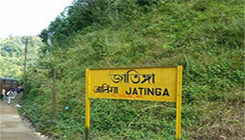 This place has long been in the global limelight for this very phenomenon of migratory birds from northern latitudes undertaking seasonal migrations committing what has been believed to be suicides by flying into houses of people at night. It has been theorized that due to the peculiar topography of Jatinga, these birds are actually attracted by the lights emanating from the houses at night and fly down to the proximity of these lights and are subsequently killed by the resident people. But the actual cause of the matter notwithstanding, the killing of birds have now been banned and thus bird lovers can now enjoy bird-watching in all its glory. Jatinga is located just 9 kilometers away from Haflong and the best months to visit for bird-watching are August to November.
This place has long been in the global limelight for this very phenomenon of migratory birds from northern latitudes undertaking seasonal migrations committing what has been believed to be suicides by flying into houses of people at night. It has been theorized that due to the peculiar topography of Jatinga, these birds are actually attracted by the lights emanating from the houses at night and fly down to the proximity of these lights and are subsequently killed by the resident people. But the actual cause of the matter notwithstanding, the killing of birds have now been banned and thus bird lovers can now enjoy bird-watching in all its glory. Jatinga is located just 9 kilometers away from Haflong and the best months to visit for bird-watching are August to November.
Economy of the Council
The economy of North Cachar Hills Areas District is mainly based on agriculture and allied activities. The district has a rich biodiversity and natural resources, which offer immense potential for development. One of the most promising sectors is tourism, as the district has many scenic spots, historical monuments, cultural festivals, and wildlife sanctuaries. The district attracts tourists from different parts of the country and abroad, who come to enjoy the beauty and diversity of the region. Tourism also generates employment and income for the local people, who are involved in various services and activities related to the sector. The district administration and the government are working to improve the infrastructure and facilities for tourism, such as roads, hotels, transport, and security. The district is also home to various indigenous communities, who have their own culture and traditions. The district also has many opportunities, such as horticulture, handicrafts, and hydroelectricity. The district administration and the government are working to improve the socio-economic conditions of the people and to promote sustainable development in the region.

